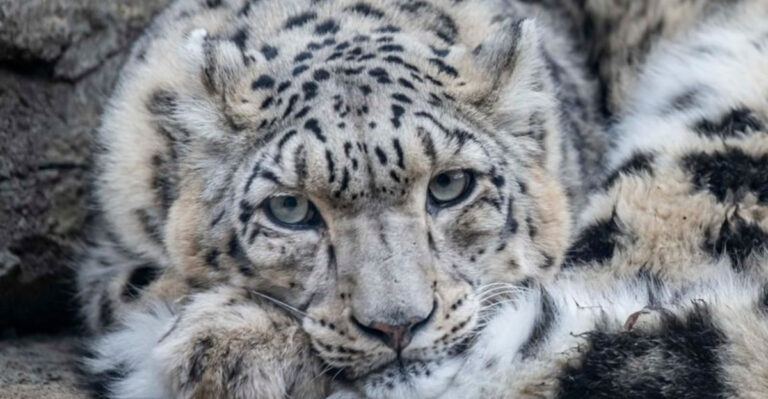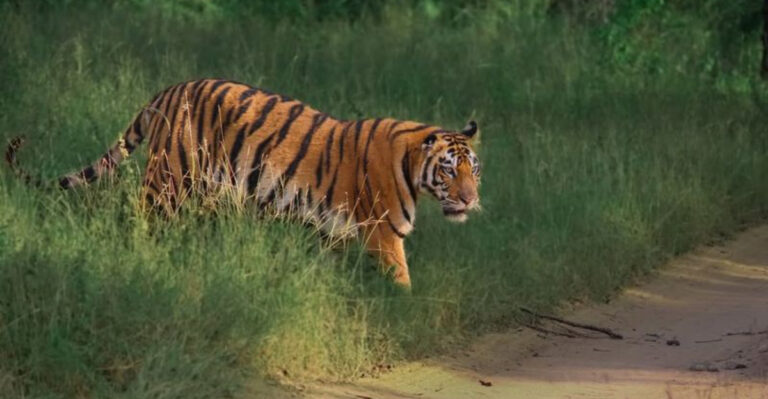This U.S. National Park Has More Mammal Species Than Any Other
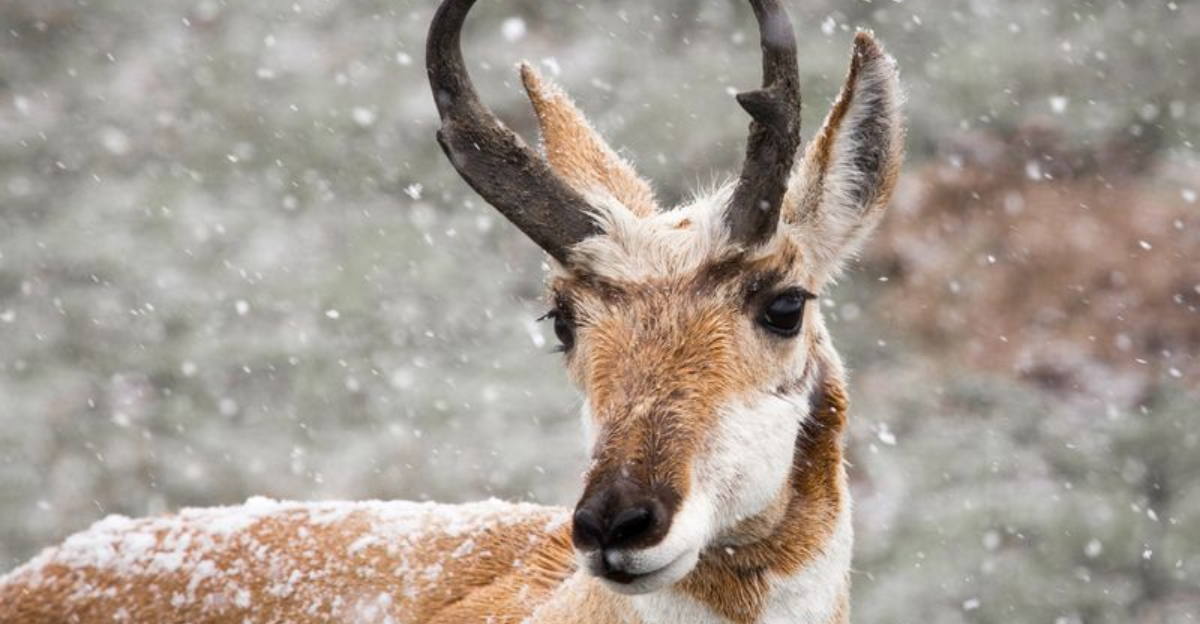
Yellowstone National Park isn’t just America’s first national park – it’s also a wildlife paradise with an incredible diversity of mammals. From massive bison to tiny shrews, this remarkable ecosystem supports more mammal species than any other national park in the United States.
The park’s varied habitats, from alpine meadows to river valleys, create perfect conditions for an astonishing array of wildlife to thrive.
1. American Bison – The Park’s Living Symbol
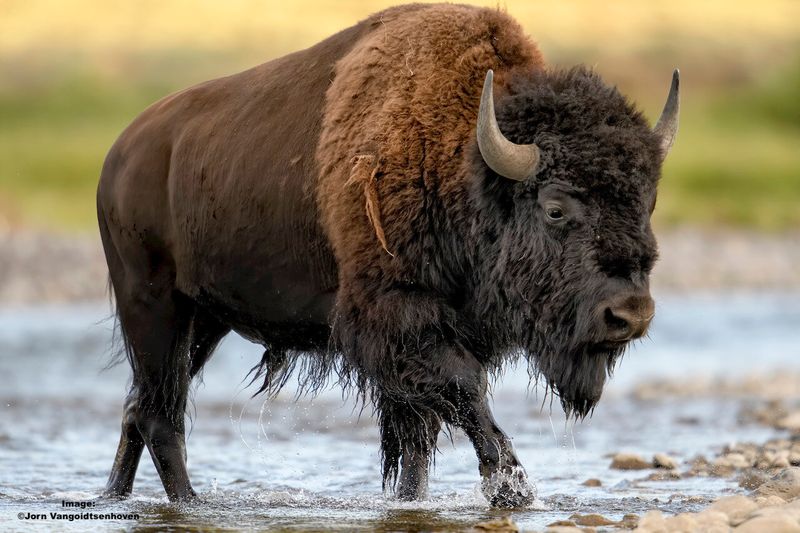
These magnificent beasts have roamed Yellowstone continuously since prehistoric times, making this the only place in America with such an unbroken lineage. A full-grown bull can tip the scales at 2,000 pounds, yet move with surprising speed when agitated.
Visitors often find themselves in spontaneous “bison jams” as these shaggy giants casually block roads. Their presence represents one of America’s greatest conservation successes, rebounding from just 23 animals in 1902 to thousands today.
2. Gray Wolf – Ecosystem Engineers
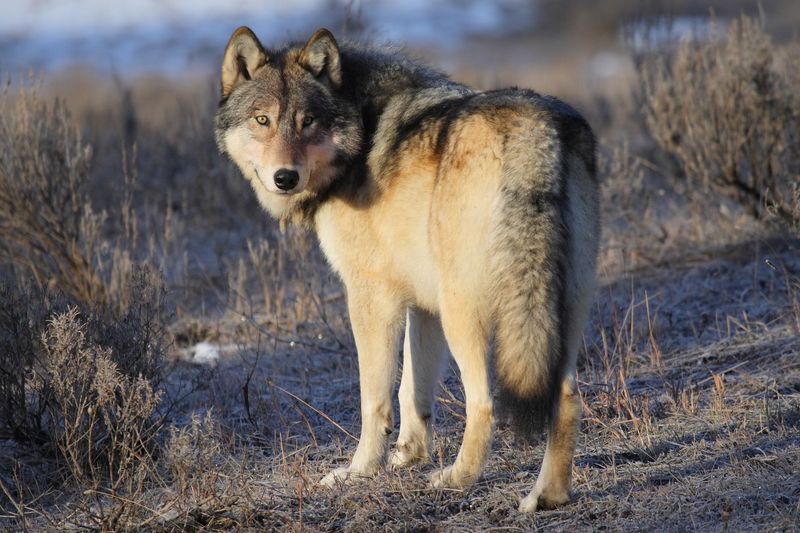
Witnessing a wolf pack move through Yellowstone’s Lamar Valley feels like stepping back in time. After being completely eliminated in the 1920s, wolves returned in 1995 through a controversial reintroduction program that transformed the park.
Their return triggered what scientists call a “trophic cascade”—changing everything from elk behavior to beaver populations and even river paths. These intelligent predators live in tight family groups, communicating through howls that can carry for miles across the valleys.
3. Grizzly Bear – Yellowstone’s Powerful Icon
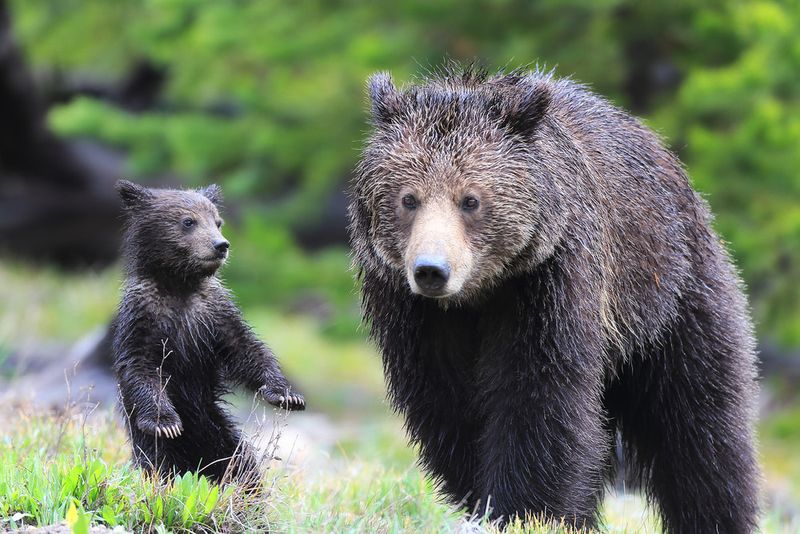
Nothing quickens the pulse like spotting a grizzly digging for roots in a distant meadow. With powerful shoulder muscles and long claws perfect for excavating, these bears can weigh up to 700 pounds after fattening up for winter.
Females fiercely protect their cubs, teaching them survival skills during their 2-3 years together. Despite their fearsome reputation, grizzlies mostly eat berries, nuts, and roots—meat makes up just 10-15% of their diet in Yellowstone.
4. Elk – Rulers Of The Valley
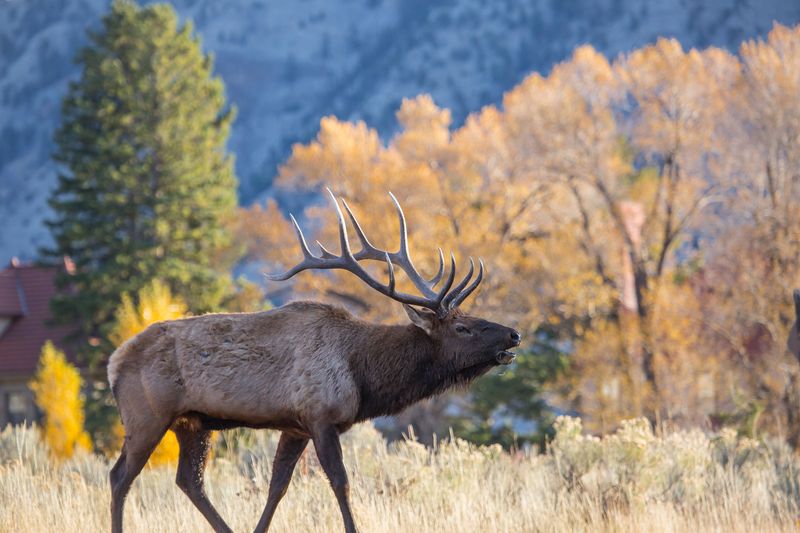
During fall, bull elk fill Yellowstone’s valleys with haunting bugling calls—a sound somewhere between a whistle and a scream. These magnificent animals gather harems of females, defending them from rivals in dramatic antler-clashing battles.
Summer brings over 10,000 elk to the park’s lush meadows. Come winter, most migrate to lower elevations, though some remain to face the harsh conditions. Their relationship with wolves has rewritten our understanding of predator-prey dynamics in this living laboratory.
5. Coyote – Adaptable Survivors

Smaller than their wolf cousins but equally fascinating, coyotes thrive in Yellowstone through remarkable adaptability. Watch one pouncing like a fox into deep snow, pinpointing mice beneath the surface with their exceptional hearing.
Unlike wolves, coyotes hunt primarily alone or in pairs, targeting smaller prey. Their resilience is legendary—when wolf populations increase, coyotes adjust their behavior rather than disappear. Listen for their yipping howls at dusk, a sound that epitomizes the wild American West.
6. Moose – Wetland Giants

Standing nearly seven feet tall at the shoulder, moose create unforgettable encounters for lucky Yellowstone visitors. Unlike their more social ungulate cousins, these solitary browsers prefer willow thickets and marshy areas in the park’s northern reaches.
Bull moose grow massive palmate antlers each summer, using them during autumn mating competitions. Though appearing awkward with their long legs and bulbous noses, moose move with surprising grace through deep snow and can even dive underwater for aquatic plants.
7. River Otter – Playful Waterway Acrobats

Few Yellowstone sights bring more joy than river otters sliding down snowbanks or wrestling playfully in the water. These sleek, muscular mammals epitomize aquatic grace with their streamlined bodies and powerful tails.
Families establish territories along waterways, creating dens with underwater entrances for protection. Their thick fur and high metabolism help them thrive even in icy waters. Lucky visitors might spot them performing synchronized swimming routines or carrying fish to shore for a leisurely meal.
8. Red Fox – Winter’s Flame-Colored Hunter
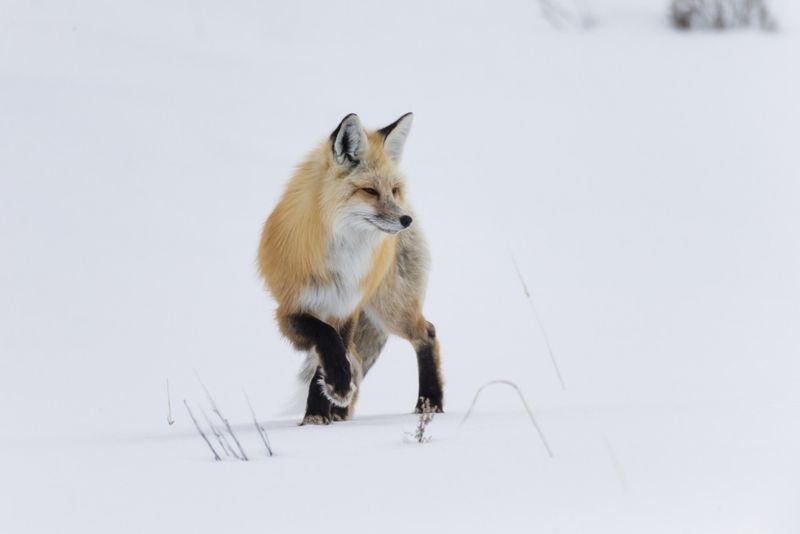
Against Yellowstone’s snowy backdrop, a red fox’s russet coat appears like a moving flame. These solitary hunters perform their signature “mousing leap”—listening intently before jumping high and plunging headfirst into snow to catch rodents hiding beneath.
Unlike many park residents, foxes don’t hibernate or migrate during winter. Their bushy tails serve as balancing poles while hunting and wrap around them as blankets while sleeping. Remarkably adaptable, they thrive from the park’s lowest valleys to alpine meadows above 11,000 feet.
9. Mountain Lion – The Phantom Predator
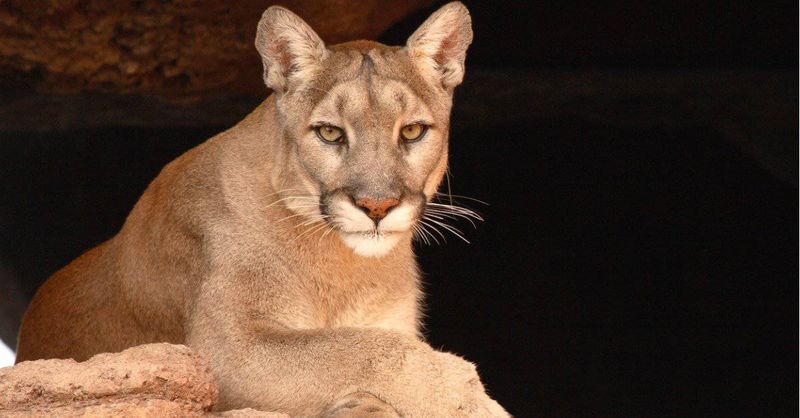
Mountain lions embody Yellowstone’s mysterious side—present yet rarely seen. These powerful cats leave only subtle signs: distinctive paw prints, scratched logs, or occasionally, a cached deer carcass covered with pine needles and soil.
A single lion might patrol a territory spanning hundreds of square miles, moving primarily at dawn and dusk. Their incredible jumping ability allows them to pounce up to 40 feet horizontally. Though seldom encountered, knowing these magnificent predators still roam the park adds a thrilling dimension to every hike.
10. Pronghorn Antelope – America’s Speed Champions

Often mistakenly called antelope, pronghorns are uniquely North American and built for one thing: blazing speed. Capable of sustained runs at 35 mph and bursts up to 55 mph, they’re the fastest land mammals in the Western Hemisphere.
Their oversized hearts, lungs, and windpipes evolved to escape predators that no longer exist—American cheetahs that died out 12,000 years ago. Yellowstone’s northern range provides crucial habitat for these remarkable sprinters, whose migrations follow ancient pathways dating back thousands of years.
11. Bighorn Sheep – Vertical World Specialists
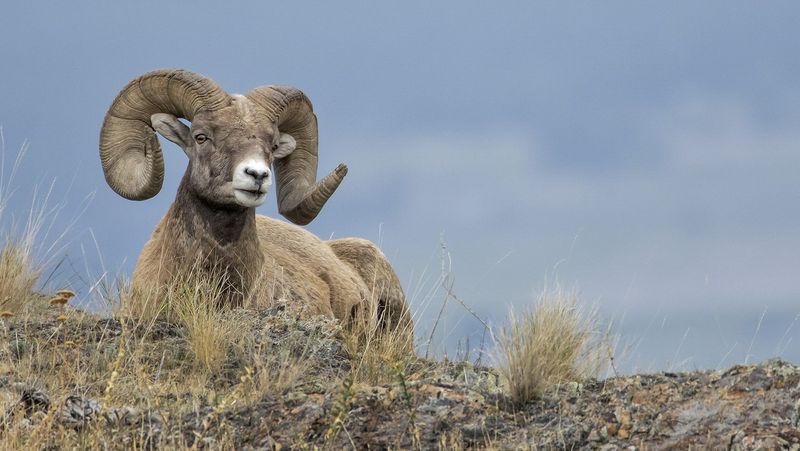
The sight of bighorn sheep navigating seemingly impossible cliff faces leaves visitors awestruck. Their specialized hooves have hard outer edges for grip and soft centers for traction—nature’s perfect climbing boots.
Males (rams) grow massive curved horns that can weigh more than all the bones in their body combined. During mating season, rams charge each other at speeds up to 20 mph, crashing horns with impacts heard echoing through canyons.
Look for them in Yellowstone’s northeastern corner, especially around Mount Washburn and the Gardner River Canyon.
12. Mule Deer – Bounce Jumpers Of The Forest

Unlike their white-tailed cousins, mule deer escape danger with a distinctive bouncing gait called “stotting”—all four feet leaving the ground simultaneously. Their oversized ears, reminiscent of mules (hence the name), constantly swivel to detect predators.
Yellowstone’s forests and meadow edges provide perfect habitat for these adaptable browsers. Males grow impressive branched antlers that fork equally, unlike the single main beam of white-tailed deer. During winter, they form small groups and move to lower elevations where snow is less deep.
13. Wolverine – The Wilderness Phantom
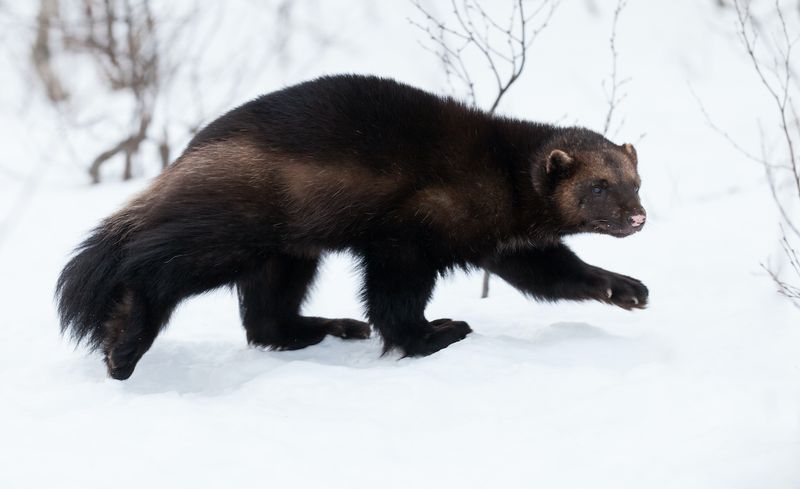
Spotting a wolverine in Yellowstone ranks among wildlife viewing’s greatest rarities. Built like miniature bears with attitudes far exceeding their 30-pound frames, these fierce mammals can bring down prey many times their size.
Their massive paws act as natural snowshoes, allowing them to travel 30+ miles daily across snowy landscapes. Wolverines cache food in natural refrigerators—snow-covered areas they remember and return to months later.
Though seldom seen, research shows these resilient creatures maintain territories throughout Yellowstone’s remote high country.
14. Beaver – Nature’s Engineers

Yellowstone’s landscape bears the unmistakable signature of its beaver populations. These industrious rodents fell aspen trees with their chisel-like teeth and construct elaborate dams that transform streams into productive wetlands.
A single beaver family can move one ton of material to build their lodge—a waterfront home with underwater entrances for protection. Their engineering creates habitat for countless other species, from fish to waterfowl.
Wolf reintroduction unexpectedly benefited beavers by changing elk behavior, allowing streamside willows to flourish once again.
15. Bat Species – Nighttime Aerial Specialists

When darkness falls over Yellowstone, the mammalian diversity takes flight. The park hosts thirteen bat species—more than any other mammal group—from the tiny Western small-footed myotis to the silver-haired bat.
These nighttime aerial acrobats consume thousands of insects hourly, providing natural pest control. Some species migrate south for winter, while others hibernate in park caves, mines, and rock crevices.
Scientists use specialized acoustic equipment to study these elusive mammals, detecting their high-frequency echolocation calls inaudible to human ears.




